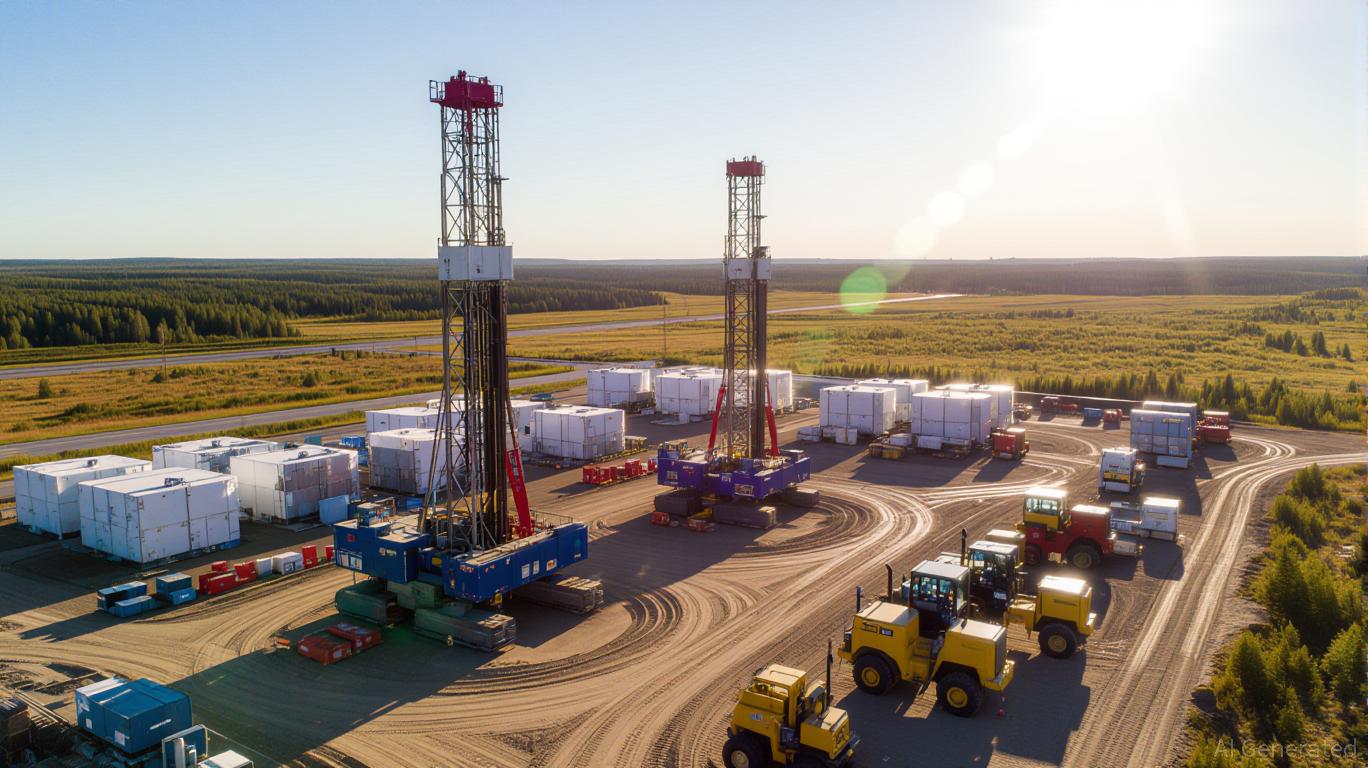
In the shadow of a volatile global energy landscape, where tight oil producers grapple with shrinking margins and capital discipline, Bonterra Energy Corp. has emerged as a case study in resilience. The Canadian independent E&P firm is leveraging a trifecta of lower capital spending, operational excellence, and asset optimization to outperform production guidance, slash debt, and position itself as a long-term value creator. As the U.S. tight oil sector collectively reels from a 9% reduction in 2025 capital budgets and a 40 kb/d downward revision in production forecasts, Bonterra’s playbook offers a blueprint for navigating—and even thriving—in a commodity environment defined by uncertainty.
Capital Efficiency: A New Benchmark for Cost Discipline
Bonterra’s 2025 capital expenditure guidance, now narrowed to $65–70 million from an initial $65–75 million range, underscores its commitment to fiscal prudence. This reduction, driven by outperforming production in the first half of the year, reflects a strategic pivot toward high-return projects. The company allocated $38.8 million in the first six months of 2025 to drilling, completion, and infrastructure, including $20.4 million for five operated wells in the Charlie Lake and Cardium regions. Notably, production costs averaged $16.44 per BOE in Q2 2025—a 8% decline from Q1—thanks to the reactivation of Cardium wells. This efficiency gain, coupled with a 10% reduction in full-year capex, positions Bonterra to generate $32 million in free funds flow, a critical metric for debt reduction and shareholder returns.
Production Outperformance: Quality Over Quantity
While many peers focus on volume-driven growth, Bonterra’s asset portfolio is a testament to quality. Its Charlie Lake play, now a core asset, contributes 1,915 BOE per day, with Montney wells producing 725–570 BOE per day. The company’s production mix—52–54% oil and liquids—offers a buffer against the price volatility that plagues gas-heavy producers. By prioritizing high-margin assets and optimizing well performance, Bonterra has maintained an annual production range of 14,600–14,800 BOE per day, even as U.S. tight oil growth slows. This focus on operational excellence is further reinforced by a hedging strategy covering 34% of crude oil and 22% of natural gas production through Q3 2025, insulating the company from market swings.
Debt Reduction and Shareholder Value: A Path to Sustainability
Bonterra’s net debt target of $135–145 million by year-end, paired with a net debt-to-EBITDA ratio of 1.0 or less, signals a disciplined approach to balance sheet management. In a sector where leverage has become a liability, the company’s ability to fund capex and debt repayment through internal cash flow is a standout. This strategy not only reduces financial risk but also paves the way for a sustainable return of capital to shareholders—a critical differentiator in an era where investors demand both profitability and prudence.
Industry Context: Navigating a Challenging Commodity Environment
The U.S. tight oil sector, despite its dominance in non-OPEC+ production, faces headwinds. Permian Basin operators, for instance, are contending with constrained takeaway capacity and flat oil prices, while tier 2 and tier 3 acreage development remains a high-risk proposition. Yet Bonterra’s focus on asset optimization—through refracturing, enhanced oil recovery, and water reuse—aligns with industry trends toward cost efficiency. At $0.15–$0.20 per barrel, the cost of reusing produced water is a stark contrast to disposal costs of $0.25–$1 per barrel, a metric that underscores the company’s environmental and economic foresight.
Investment Implications: A Case for Long-Term Resilience
For investors, Bonterra’s strategy offers a compelling narrative. In a market where capital discipline is paramount, the company’s ability to outperform guidance while reducing debt and maintaining production stability is rare. Its focus on high-return projects, coupled with a robust hedging program, creates a buffer against commodity price volatility. Moreover, the company’s operational metrics—$16.44 per BOE costs, a 10% capex reduction, and a net debt-to-EBITDA ratio of 1.0—position it as a low-risk, high-conviction play in a sector otherwise defined by uncertainty.
However, risks remain. The completion of midstream infrastructure, such as the Matterhorn Express Pipeline, is critical to unlocking natural gas value in the Permian. Delays could pressure margins, and a prolonged slump in oil prices could test Bonterra’s free funds flow projections. Yet, given its track record of navigating volatility and its strategic alignment with industry best practices, these risks appear manageable.
Conclusion: A Model for the Future
Bonterra Energy’s approach to capital efficiency, production optimization, and debt reduction is a masterclass in value creation. In a tight oil market where survival often hinges on operational excellence, the company has demonstrated that profitability and sustainability are not mutually exclusive. For investors seeking exposure to a resilient E&P firm with a clear path to long-term value, Bonterra’s story is one worth watching—and betting on.
